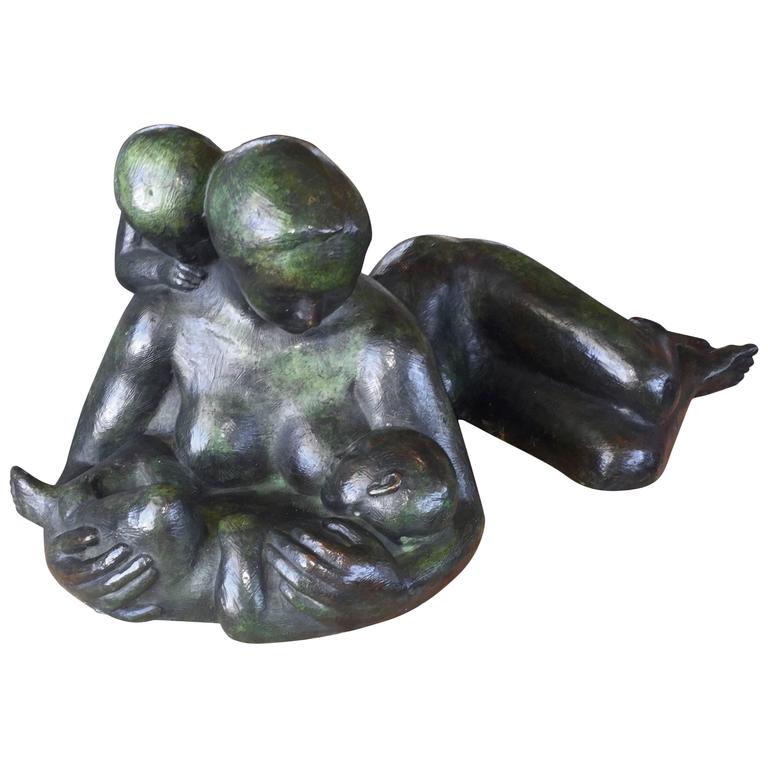Frederico Cantu Large Impressive 1986, Bronze of a Mother Nursing

A large and impressive work by the California or Mexican noted artist Frederco Cantu (1907-1989). It is signed and dated 1986. Quite large and heavy.
A brief bio follows from askant:
Federico Cantú Garza 1907-1989.
A painter, engraver, muralist and sculptor, he was born in Cadereyta in the state of Nuevo León in 1907. In 1922 he joined the Open Air School of Painting directed by Alfredo Ramos Martínez, whose original ideas enhanced his education. In contrast to other artists, his style followed an academic line that he also applied to mural painting.
For ten years (1924-1934) he traveled around Europe and the United States. He exhibited for the first time in the Exposition Park Museum in Los Angeles, California 1929, and took part in several collective exhibitions in New York MOMA 1940. He returned to Mexico in 1934, and in 1945 he began to work in drypoint with Carlos Alvarado Lang In 1986, the exhibition in homage to Federico Cantú “Ciclos y reencuentros” was held in the Palace of Fine Arts. That same year he went to the United States for the last time to hold classes at the University of California.
The historical and religious content of his work was developed through a drawing technique of excellent quality. For ten years after 1951 he devoted himself mainly to painting murals in private homes. In 1960 he began producing reliefs and emblematic sculpture of the Mexican Institute of Social Security. He created his last monument, a memorial to Alfonso Reyes, in 1988. Federico Cantú died in Mexico City in 1989.
Just as Rodríguez Lozano, Federico Cantú felt a special attraction to the work of Picasso, and his influence is felt not only in the subject matter, but also in the compositional treatment of the production of several Mexican artists. Picasso and his paintings were known and studied in detail in Paris and New York by Cantú. Arlequines is, curiously, the same theme as several Picasso engravings which are in the collection at the National School of Fine Arts, where Cantú might have seen them long before he did the decorations for the bar Papillón in Mexico City, precisely with the theme The Harlequin’s life Grotescos Rapto de Arlequín, Sad Arlequín ( Colección Cantú Y de Teresa). At one time the American collector MacKinley Helm showed Cantú’s drawings to Diego Rivera, who, wanting to scoff at them, said he “was the poor people’s Picasso”. What can be said is that the subject matter has a genealogy that goes back directly to the most influential Spanish painter of the XX century,
Cf. MacKinley Helm. Modern Mexican Painters. New York, Harper & Brothers, 1941. Federico Cantú, Fundación Federico Cantú, Cantú Art, Cantú y de Teresa.
Biography from Crocker Art Museum Store
Sculptor, painter. Born in Mexico in 1907. While in Mexico Cantu worked for several years as an apprentice to Diego Rivera before moving to Los Angeles in 1928.
Exhibitions include the Los Angeles County Museum of Art, 1930; the San Francisco Art Association, 1930; Stendahls (LA), 1937; New York, 1940; Mexico City, 1950.
Edan Hughes, “Artists in California, 1786-1940”
U.S 1986 c.H: 13"W: 42"D: 14"Reference number: LU83504310673
Click here to print.
go back
